Search
Search Results
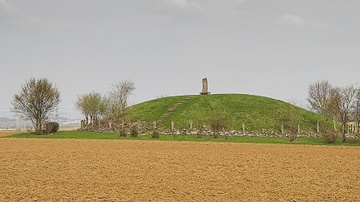
Image
Reconstruction of the Celtic Hochdorf Burial Mound
A reconstruction of the Celtic Hochdorf burial mound located near Baden-Württemberg in southwest Germany. The burial within a wooden chamber of a single male dates to the second half of the 6th century BCE.

Definition
Scythian Art
Scythian art is best known for its 'animal art.' Flourishing between the 7th and 3rd centuries BCE on the steppe of Central Asia, with echoes of Celtic influence, the Scythians were known for their works in gold. Moreover, with the recent...
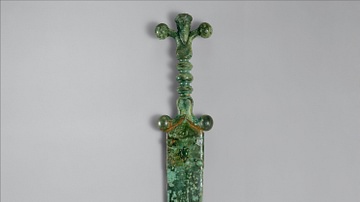
Image
Anthropomorphic Celtic Sword
A Celtic sword and its scabbard (now amalgamated) from c. 60 BCE, associated with the La Tene culture. The sword's hilt is decorated with the head of a warrior, geometrically reduced like many other examples of Celtic art. The sword and its...
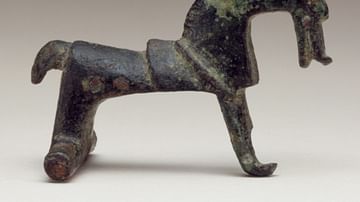
Image
Celtic Horse Brooch
This small bronze brooch was made in Central Europe sometime between 650 and 550 BCE. This horse-shaped pin is one of many examples of Celtic animal brooches from Central Europe. From the Metropolitan Museum of Art, New York.
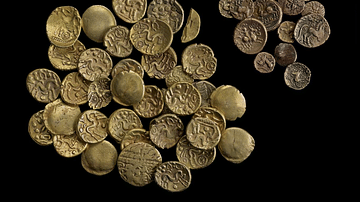
Image
Essendon Celtic Coin Hoard
A number of the gold coins found in the Celtic Essendon hoard from Hertfordshire, England. The hoard dates to the period c. 60 BCE to 40 CE. It is likely the coins were buried as a votive offering as the hoard was added to over a period of...
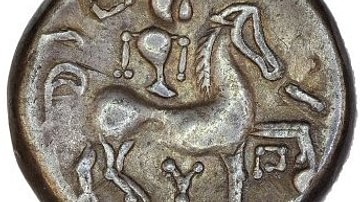
Image
Celtic Coin Depicting Horse & Rider
The reverse of a 2nd Century - 1st Century BCE Celtic silver coin from Central Europe, specifically what is now the Czech Republic. The reverse of this coin depicts a horse and rider in stylized geometric forms. From the British Museum in...
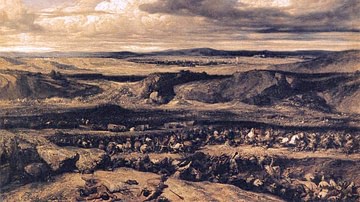
Definition
Cimbri
The Cimbri were a tribe who lived in northern Jutland during the Roman era. Their ethnicity is enigmatic; scholars generally believe that the Cimbri were Germans, though others maintain that they were Celts. The late 2nd-century BCE migration...
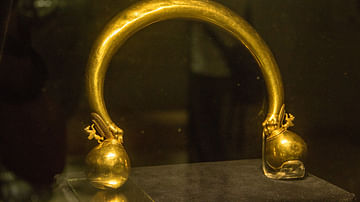
Image
Celtic Torc, Vix Burial
A gold neck torc from the Celtic Vix burial, Châtillon-sur-Seine, in northeast France close to a fortified Celtic site or oppidum and in the vicinity of at least four more burials. Discovered undisturbed, the princely burial dates to the...

Image
Celtic Oppidum Reconstruction
A reconstruction illustration of the main gate of the Celtic oppidum (hilltop fort) of Arola in Spain. Oppida were built in the 3rd century BCE to 1st century CE in Celtic Europe. (Archaeological Museum, Bilbao)
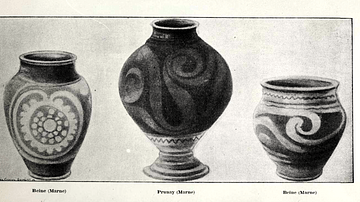
Image
Celtic Pottery Vessels, Marne, France
Three Celtic pottery vessels from La Marne, France. They shows typical Celtic design features with their curvilinear shapes and decoration. 4th century BCE. (British Museum, London)